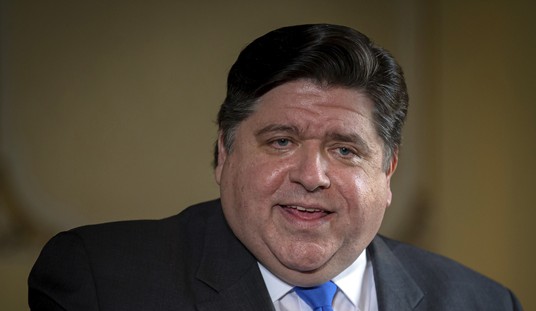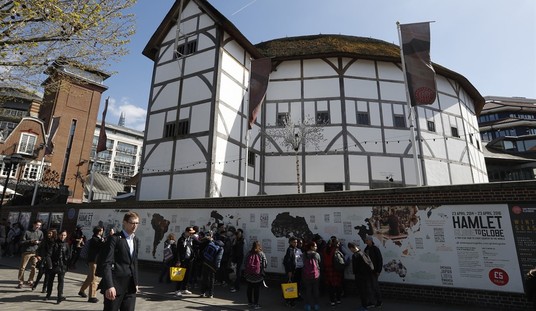“It was televised, but it wasn’t the revolution,” Charles C. W. Cooke writes:
Michael Brown’s death remains a great mystery. The witnesses’ accounts disagree, there is confusion as to which pieces of evidence are legitimate and which are not, and the police officer at the heart of the matter has not yet spoken. In lieu of hard information, two possible routes have presented themselves: speculation or patience. By and large, the American people have opted for the latter.
Which is to say that when Harvard Law School’s Charles Ogletree proposed this week that Brown’s killing was similar to the murders of Emmett Till and Dr. Martin Luther King Jr. he had it precisely backwards. The cases of Till and of King were so powerful because they were so clear-cut — because both victims were self-evidently innocent parties whose lives were publicly taken from them by hate-filled men. Michael Brown, by contrast, could still turn out to have been the villain of the piece. We simply do not know what happened. This has made it difficult for those with an agenda to profit from the case. Ambiguity does not national outrage make, nor can effective political conversations be scripted by know-nothings.
The riots, too, served only to muddy the waters. It was damaging enough to the emerging narrative that those responsible for the unrest had so prematurely determined the officer’s guilt, but it was fatal that their anger was directed at private businesses whose owners and customers were unconnected to the matter at hand. The most effective revolts are simple in nature and morally clear. Legally, it would not have been more acceptable if Ferguson’s mutineers had elected to burn down the police station or to sack the town’s courthouse. But it would have brought their complaint more clearly into focus. Rash and irresponsible as their cry of “injustice!” was, agitators were nonetheless trying to convey to the general public that they are routinely mistreated by the system — that, in other words, Michael Brown is just one of many. There are many among us who would not dismiss this claim out of hand. Most of them, however, will fail to see the connection between striking a blow for the universal rights of man and burning down a QuikTrip. It is tough to keep the attention on the participants in the fight when you have, by your actions, created another set of victims on which the newspapers may fixate.
Gee, you mean taking your protest strategy from the ending of Spike Lee’s Do the Right Thing is a pretty stupid idea? Other than 99 percent of the American public, who knew!
Related: Rather than dwell in the lurid revenge fantasies crafted by Lee and other “Hollywood Violence Profiteers” as Michelle Malkin dubs them in her new column, “Blacks Must Confront Reality,” Walter E. Williams writes at Townhall:
The Census Bureau pegs the poverty rate among blacks at 28.1 percent. A statistic that one never hears about is that the poverty rate among intact married black families has been in the single digits for more than two decades, currently at 8.4 percent. Weak family structures not only spell poverty and dependency but also contribute to the social pathology seen in many black communities — for example, violence and predatory sex. Each year, roughly 7,000 blacks are murdered. Ninety-four percent of the time, the murderer is another black person. Though blacks are 13 percent of the nation’s population, they account for more than 50 percent of homicide victims. Nationally, the black homicide victimization rate is six times that of whites, and in some cities, it’s 22 times that of whites. According to the Bureau of Justice Statistics, between 1976 and 2011, there were 279,384 black murder victims. Coupled with being most of the nation’s homicide victims, blacks are also major victims of violent personal crimes, such as assault, rape and robbery.
Unfortunately for everyone in America, the elite left cannot preach what it practices, as Charles Murray brilliantly put it, and instead, quietly practices conservative day-to-day values which they refuse to pass on to others less fortunate who would benefit from them as well:
That’s because the new upper-class has “lost self-confidence in the rightness of its own customs and values, and preaches nonjudgmentalism instead.” Non-judgementalism, he writes, “is one of the more baffling features of the new upper-class culture. The members of the new upper class are industrious to the point of obsession, but there are no derogatory labels for adults who are not industrious. The young women of the new upper class hardly ever have babies out of wedlock, but it is impermissible to use a derogatory label for non-marital births. You will probably raise a few eyebrows even if you use a derogatory label for criminals. When you get down to it, it is not acceptable in the new upper class to use derogatory labels for anyone, with three exceptions: people with differing political views, fundamentalist Christians, and rural working-class whites.”
As Marco Rubio said last month, “I was taught certain values that led me to live my life in a sequence that has a proven track record of success. In America, if you get an education, find a good job, and wait until marriage to have children, your chances of achieving economic security and professional fulfillment are incredibly high.”
But success and self-reliance don’t feed the left’s ever-growing victim-industrial complex, which helps to explain why elite leftists can’t preach what they quietly practice amongst themselves.
It also helps to explain why, “After Hearing What a Tea Party Group Recently Did in Ferguson, You Likely Won’t Be Surprised That You Haven’t Heard About It.”
(Click here for my recent interview with Murray on his new book, The Curmudgeon’s Guide to Getting Ahead.)










Join the conversation as a VIP Member